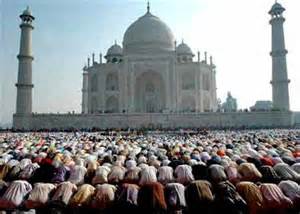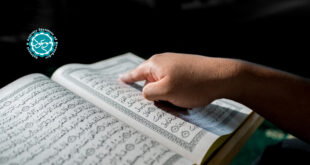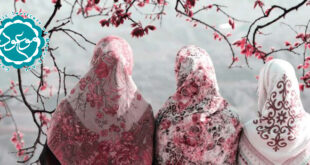The religious system typical of the Muslim communities in India bringing about interfaith understanding and harmony. The Islamic religious traditions rightly responded to different cultural situations and contexts in the course of its journey from its Arabian heartland to distant parts of the world. Islam was always an important structural basis of social identity and articulation of Muslims in a religiously and culturally diverse situation encountered in India.
In performing the rituals and celebrating the festivals, the Muslims seek to assert their distinct religious identity and come together as members of a unified Muslim Ummah, but at the same time the typical indigenous elements assimilated in the Islamic traditions, the Muslim rituals and festivals in India have always resulted in the interfaith understanding in this region. Some of the elements assimilated in the Islamic traditions according to the accepted standards of Islamic faith and theology may be regarded as heterodox.
Certainly Islam is a basis of identity articulation for the Muslims in the plural cultural situation existing in India. Islam provides the individual Muslim with a plan for life from the daily ritual of worship, through the annual cycle of ceremonies, to the ritual observance of life cycle. The Muslims in South Asia, as indeed the Muslims elsewhere in the Islamic world, believe in and fully adhere to the cardinal pillars of Islamic faith.
The observance of Muharram and Urs ceremonies in India by Muslims and non-Muslims alike according to beliefs have always bolstered social cohesion, touching upon the question of cultural syncreticism and allowing a greater degree of pluralism.
Commemoration of Muharram in India by non-Muslims
The observance of Muharram ceremonies in India in particular has attracted the deep reverence and devotion for the performance of its rituals and customs by the Muslims and non-Muslims alike. Thus, the observance of Muharram ceremonies has introduced Islam as the harbinger for interfaith understanding in India.
Imam Husain’s great sacrifice is commemorated by Muslims everywhere in the world, but it is observed with great emotional intensity in India. What is particularly striking about the observances of the month of Muharram in India is the prominent participation of Hindus in these rituals. This has been a feature of Hinduism for centuries in large parts of India, and continues even today. In towns and villages all over the country, Hindus join Muslims in lamenting the martyrdom of Imam Hussain (A.S.), by sponsoring or taking part in lamentation rituals and tazia (replica of the mausoleum of Imam Husain in Karbala) processions.
The commemoration of Imam Husain’s sacrifice every year creates the most dramatic impact in India. The majority of the population in India is non-Muslim. It is curious to see these non-Muslims participating in the many colorful and devotional ceremonies during the month of Muharram. Also, it has affected the rich and the poor alike.
In India the non-Muslims like Hindus, Sikhs, Jains and Christians observe Muharram ceremonies with great devotion. Varanasi, the holiest city of Hinduism in India and the city of famous ghats and Vedic saints, has a mixed tradition of commemorating Muharram where some Hindu families participate in the procession. This also happens in Lucknow, Allahabad, Kanpur, Hyderabad, Kolkatta, Mumbai, Chennai, Amroha, Indore, Nagpur, Jaipur, Bhopal and other major cities and towns. I have personally observed during my stay in India that large groups of Hindus in these cities participate in the majlis (mourning congregations); they also take part with enthusiasm in making the taziyas (replicas of the Imam Husain’s mausoleum in Karbala).
Varanasi’s Shivala Mohalla boasts of the most artistic taziya, and a replica of Zuljinah, Imam Hussain’s brave horse which is given milk in a traditional ritual in many cities in Uttar Pradesh and Madhya Pradesh.
The Hindu rulers of Vijayanagar in Deccan (southern India) built wonderful Imambaras during the 16th and 17th centuries. They even wore the black garments of mourning during the first 10 days of the month of Muharram. Muharram processions during the 18th and 19th centuries were taken out by the Hindus in Rajasthan, Gujarat and Maharashtra with rath (Hindu chariots) shaped tazias.
The Maratha ruling kingdoms like the Scindias of Gwalior, the Holkars of Indore, the Geakwads of Baroda and the Bhonsle of Kolhapur and Pune till now observe Muharram rituals with great devotion.
During their dynastic rules they strived to create interfaith understanding between Muslims and Hindus by observing Muharram ceremonies. The most famous of them all was the Rajah of Gwalior, a state in central India. The Rajah used to go barefoot with the procession every year on the day of Ashura, holding a replica of Imam Husain’s mausoleum.
Among the Hindus of Lucknow, the former capital city of the Nawabs of Awadh, the Muharram ceremonies are greatly revered by the Hindus. In Lucknow a large number of Hindus participate in the‘azadari’ processions of the Shia Muslims. Many Hindus fast with Muslims on this day, while others distribute sherbet (sweet juices) and iced milk to those participating in the Muharram processions.
Some of the Hindus in Lucknow walk on a carpet of red hot embers with the chants of Ya Hussain called Aag ka Maatam, a unique way of mourning during Muharram in this city of nawabs. Muharram, presents an unparalleled example of Hindu-Muslim unity in this historical city.
There are several ‘anjumans’(religious organizations) in Lucknow run by Hindus which take out ‘azadari’processions and organize ‘majlis’ (mourning sessions where heart-rending tales of Imam Hussain’s martyrdom are narrated) throughout Muharram.
Lucknow also boasts of several Hindu‘imambaras’ (mausoleums). One such is the ‘Kishnu Khalifa ka Imambara’ in Bashiratganj locality in the old city area. The Imambara, established in 1880, is famous for its Hindu ‘azadars’ (devotees) who observe Muharram with all the religiosity of the Muslims. A large number of Hindus, including their children, perform ‘aag ka maatam’ here. ‘Anjuman-e-Hind-e-Abbasia’ and ‘Anjuman Haaye Sakeena’ are the other organizations known for Hindus observing all the mourning rites associated with Muharram in large numbers.
In Lucknow, seat of the Shia nawabs of Awadh, prominent Hindu noblemen like Raja Tikait Rai and Raja Bilas Rai built Imambaras to house alams, the standards representing the Karbala event.
The non-Muslim tribal Lambadi community in Andhra Pradesh has their own genre of Muharram lamentation songs in Telugu. Among certain Hindu castes in Rajasthan, the Karbala battle is recounted by staging plays in which the death of Imam Husain(A.S.) is enacted, after which the women of the village come out in a procession, crying and cursing Yazid for his cruelty. In large parts of north India, Hindus believe that if barren women slip under an alam moving in a procession they will be blessed with a child.
Cultural and Social Effects of Muharram Ceremonies
For example the following news item was published recently on the internet during the Muharram ceremonies this year:
The Sharma Hindu families have been taking out the Tazia procession on Muharram for more than 120 years in some districts of Madhya Pradesh. The ritual began in 1882 when the Raikwar family of the Vidisha town began preparing and taking out Tazias on the ninth day of Muharram. Since then, the Raikwar’s Tazia leads the procession of mourners on Muharram, and moves ahead of the long line of replicas of Imam Husain’s tomb and flags along the streets. Like several Muslim families across the globe, the Raikwar family members, too, set aside their daily chores to grieve for the grandson of Prophet Muhammad, Imam Husain (A.S.), and his 72 companions who were brutally killed on the banks of the river Euphrates in Karbala (Iraq) in 61 A.H.
 Mouood Mouood English Edition
Mouood Mouood English Edition




